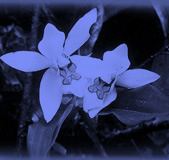 |
2008 |
|
 |
July
2008
|
Shuklapantha
Wildlife Reserve: Tigers on the decline
|
 |
 |
| The
tiger population in the Shuklapantha Wildlife
Reserve (the third largest habitat of tigers in the world) has
declinde due to poaching. Department of National Parks and Wildlife Reserves
officials said that recent census conducted in the Shuklapantha Wildlife
Reserve showed that there are anywhere between 6 to 14 tigers in the reserve. |
|
Two
years ago it was estimated that 10 to 17 tigers were living in the reserve.
Conservation officials think that poachers who were active in wildlife
reserves in India have entered Nepal.
top
February
2008
|
'New
type of bird' found in southern Nepal
|
 |
Nepalese
scientists have recorded a new subspecies of bird at Koshi
Tappu Wildlife Reserve (KTWR) of east Nepal.
The
bird was first recorded by Ornithologist and Chairperson of Nepal Rare
Birds Committee (NRBC) Mr Suchit Basnet and Mr Badri Chaudhary on 1 April
2005 at Koshi Tappu. The bird was identified as Rufous-vented Prinia bringing
Nepal's total bird list to 862 species. The bird is known as Prinia burnesii
to scientific community. The new taxon from Nepal is referred to as Nepal
Rufous-vented Prinia Prinia burnesii nipalensis.
Mr
Basnet has already found several new birds for the country and he records
this "A fascinating experience with great excitement at the time of discovery.
This must have been the most exciting bird record reviewed by the Nepal
Rare Birds Committee since its establishment in 2001."
A
team of experts affiliated with Bird Conservation Nepal (BCN) led by Ornithologist
Dr Hem Sagar Baral has further assessed the taxonomic status of the bird
and recently declared the bird as hitherto undescribed new subspecies of
Rufous-vented Prinia. Finding of the work has now been published in Bird
Conservation Nepal's quarterly bulletin Danphe (Vol 16 No 4 December 2007).
Other members in the team were Mr Suchit Basnet (Chairman of Nepal Rare
Bird Committee), Mr Hathan Chaudhary, Mr Badri Chaudhary, Mr Tika Giri
and Mr Som GC all well-known and acknowledged ornithologists in the country.
According to the lead author of the scientific paper, Dr Baral, "this subspecies
is currently found only in Nepal". He further added, "Discovery of a nex
taxon from Koshi Tappu which is one of the most bird watched areas of the
country indicates the possibilities of finding more new species from the
country. We must put extra resources for understanding birds and their
conservation needs in future".
Ornithologists
call this as a ground breaking research work and most significant on the
taxonomy of Nepal's birds after the discovery of Nepal Wren Babbler Pnoepyga
immaculata a new bird described to science nearly 17 years ago.
The
other two subspecies of Rufous-vented Prinia, the first one Prinia burnesii
burnesii is found in Pakistan in the west along the tributaries of Indus
River and adjacent Punjab in India, and the second Prinia burnesii cinerascens
is found in Assam in the east along the Bramhaputra river systems and adjoining
states of India and Bangladesh. The newly described bird shows somewhat
intermediate characters between the two subspecies and appears to form
a link between them, is found in the Ganges river systems which is the
other major river system in the India subcontinent.
The
adult of this new subspecies has overall olive-grey to light brown plumage.
The head and nape are greyer compared to the browner back, wings and tail.
In most individuals, there is faint whitish supercilium which reaches behind
the eye. The head is densely streaked compared to back. On the back, the
streakings are bolder compared to the ones in head. The juveniles are similar
to adults but slightly less marked on the head and body. Light rufous undertail
coverts were visible in one young bird caught. All birds seen and heard
were located on grassland patches on small islands of the Koshi River.
The grass species in the area included Saccharum spontaneum, S. arundinacea,
Typha elephantine, and Phragmites karka. Sparsely dotted young sissoo Dalbergia
sissoo trees and xeric bushes Casurina spps. were also present. They were
absent in heavily disturbed grasslands adjacent to villages indicating
their preference for less disturbed grasslands.
It
is a resident breeding species and highly threatened in the country because
of habitat loss and degradation. Future surveys might reveal its presence
in grasslands in different parts of the country.
Source:
Bird Conservation, Nepal, February 2008
More
information:
Bird
Conservation, Nepal
|
Links
|
 |
 |
 |
External
link |
 |
 |
Nature
and Natural Resources
ARKive |
|
 |
| 



